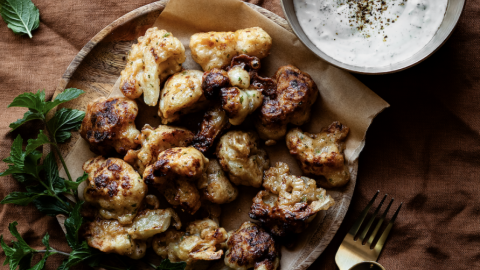Christmas Merri-Mint
Minty red- and white-striped canes hung on vibrant evergreens—a common sight this time of year. Like gingerbread, peppermint is a defining flavour of the holidays, its cool and refreshing flavour reminiscent of icy snow and crisp air. We habitually flock to it come December; however, peppermint’s potent flavour and aroma have been treasured for millennia with uses more diverse than that stash of mini candy canes in your handbag.
As a member of the Lamiaceae family, mints are related to other aromatic herbs such as lavender, sage and rosemary. Several dozen cultivars of mint exist, each with overlapping characteristics and varying amounts of menthol, the active compound that gives these perennials their cooling properties. Crossbreeding of spearmint, one of the oldest varieties, and wild mints gave rise to several hybrids, the most well-known, of course, being peppermint. Because of its specific pedigree (spearmint and water mint), peppermint contains a potent amount of menthol tempered with sweetness—this particular profile has made it the dominant variety grown and used worldwide. Most grocery stores carry fresh mint year-round, but it can also be grown indoors as an attractive and useful houseplant.
Peppermint has origins in the Mediterranean and North African regions, its fresh leaves and extracts prized for medicinal, spiritual and culinary practices since 1500 BC. Ancient Egyptians, Romans and Greeks reportedly used it to flavour food and wine, perfume homes or temples and treat various ailments such as indigestion and headaches. With its alleged antibacterial and antifungal properties, mint was also used to preserve food and, during the medieval era, its refreshing qualities were ideal for freshening breath and disguising odours. Today, peppermint remains widespread in modern cuisine, aromatherapy, herbal remedies and cosmetics via oral care products.
We put it to use year-round, but this common herb really shines come winter. Exactly how it became associated with the holidays is a bit of a mystery, though. Records from 17th century Germany depict peppermint candy shaped as shepherd’s canes doled out to children during lengthy nativity services. Moreover, peppermint was historically offered to guests as a symbol of hospitality and friendship. Though historians still contemplate its earliest initiation into the holiday hall of fame, illustrations from late 19th century Europe more concretely depict the use of peppermint canes on Christmas trees, a tradition that endures to this day.
Culinary uses for peppermint are extensive and much anticipated during the festive season. Menthol produces a palate-cleansing effect and adds contrast to rich or sugary dishes—mint chutneys, sauces or herb rubs brighten up fatty fish, chicken or lamb dishes; fresh leaves wake up roasted vegetables and add an additional chill factor to spritzers and cocktails. Peppermint extract or hard candies are a go-to for desserts like chocolate mint cake, peppermint brownies or peppermint bark. However, when it comes to holiday baking, there are instances when using fresh mint, as opposed to an extract, adds a discrete yet irrefutably minty profile without being overpowering. A few seconds in the food processor will turn granulated sugar and fresh mint leaves into a frosty green spectacle that can be seamlessly mixed into cookie dough or cake batter.
Regardless of how it came to be, peppermint’s affinity for the holidays seems a natural fit. Quietly sipping a peppermint mocha from my spot on the sofa, relishing in the aroma of fresh chopped mint in my roasted vegetables or sharing a plate of mint cookies with family and friends is a perfect way to uplift the spirits and indulge amidst the *ahem* excite-mint of the season.







